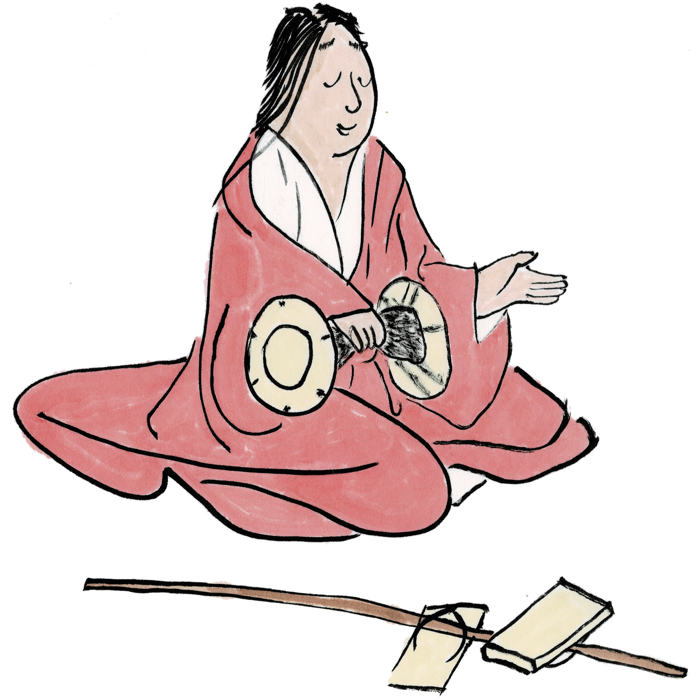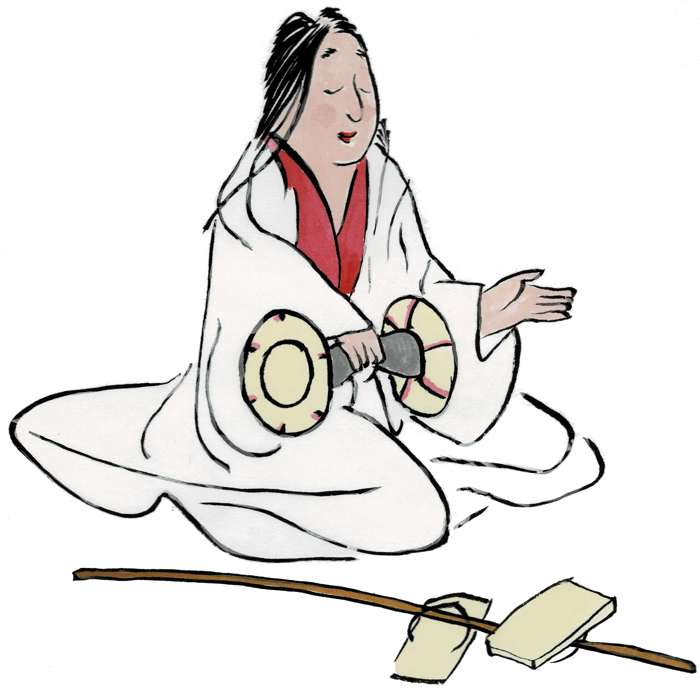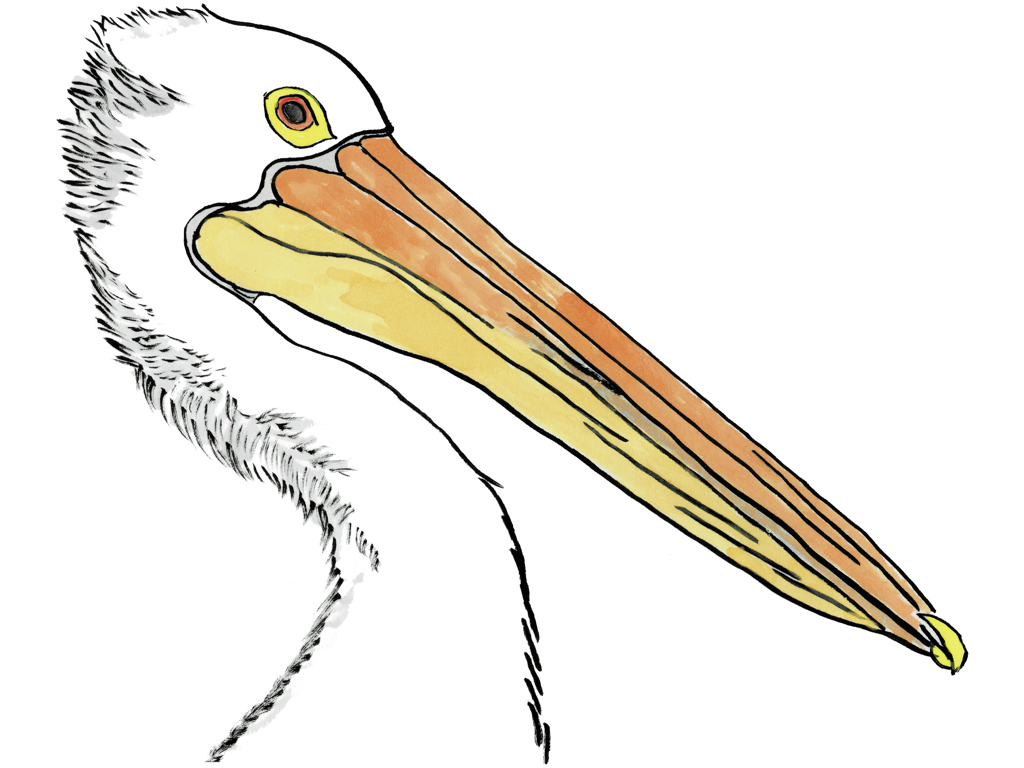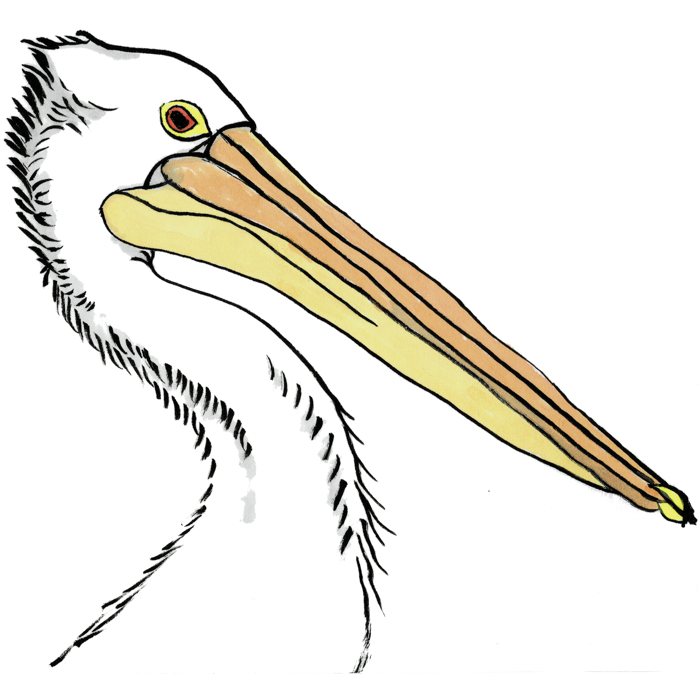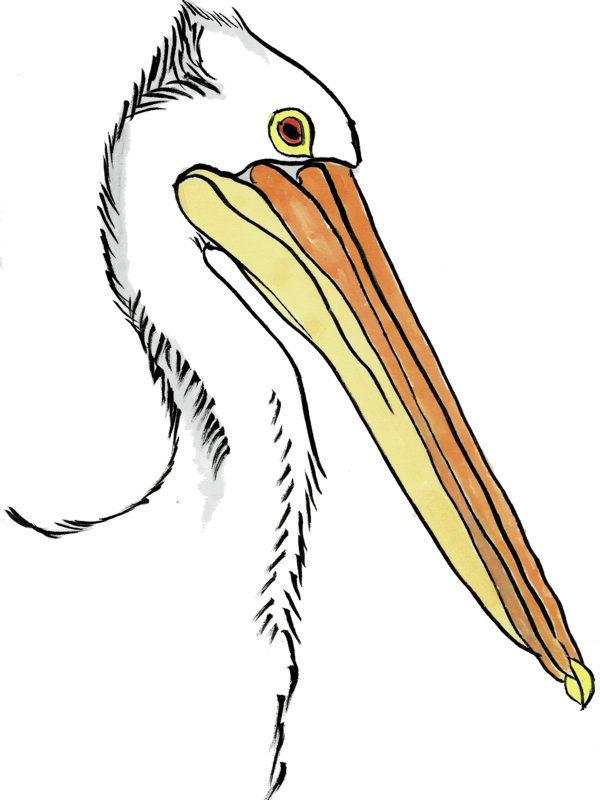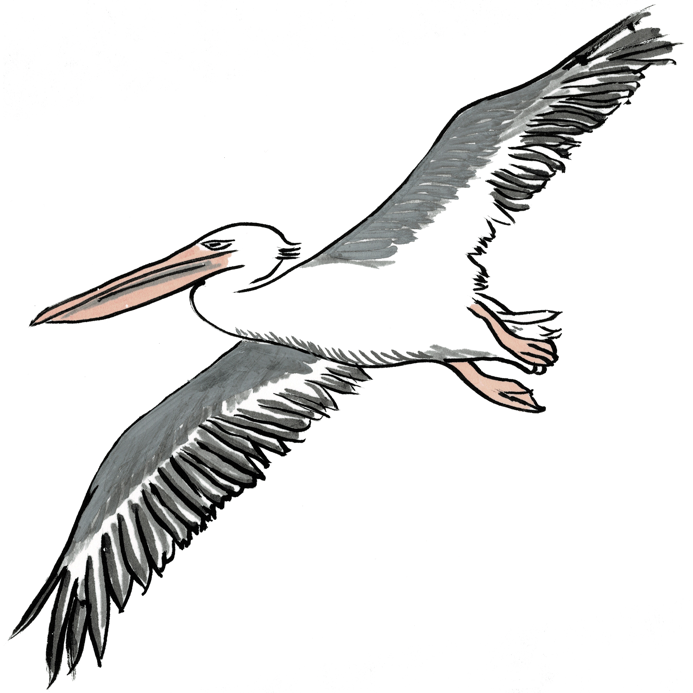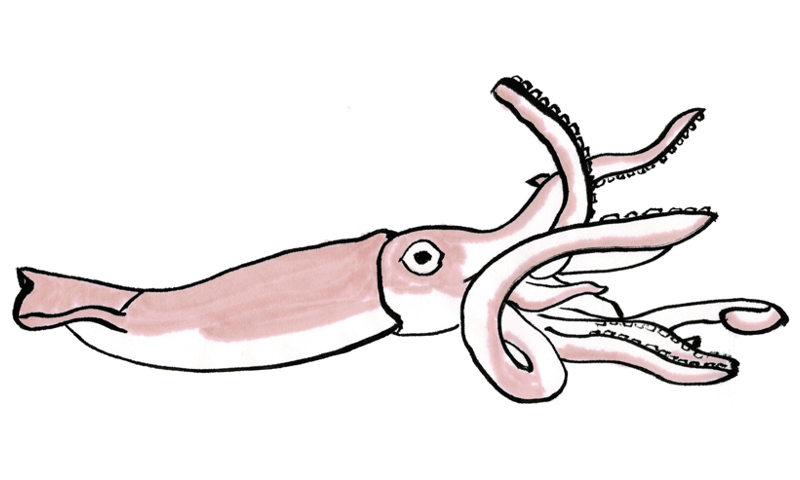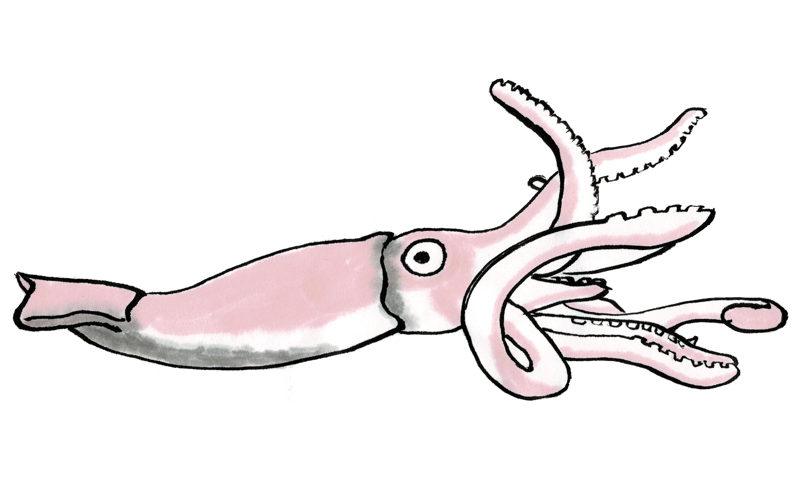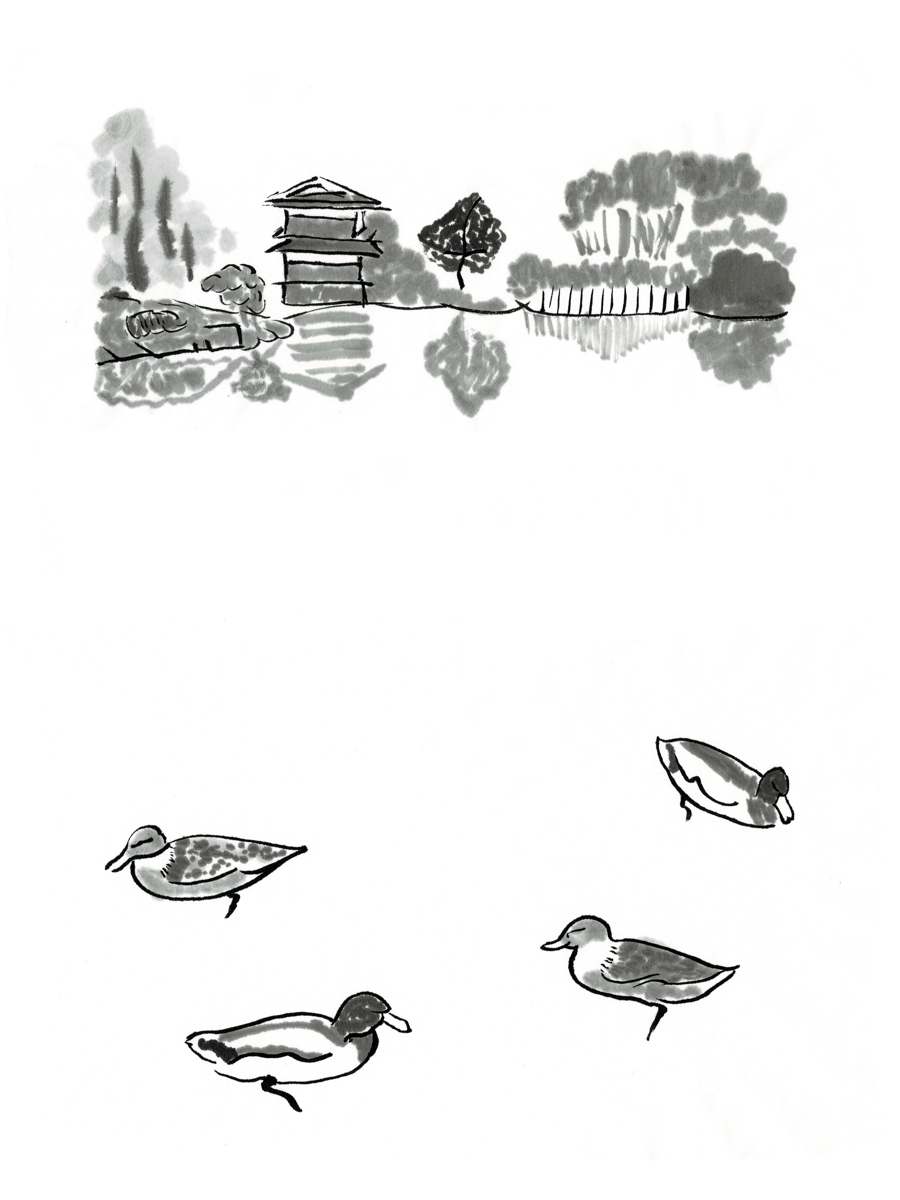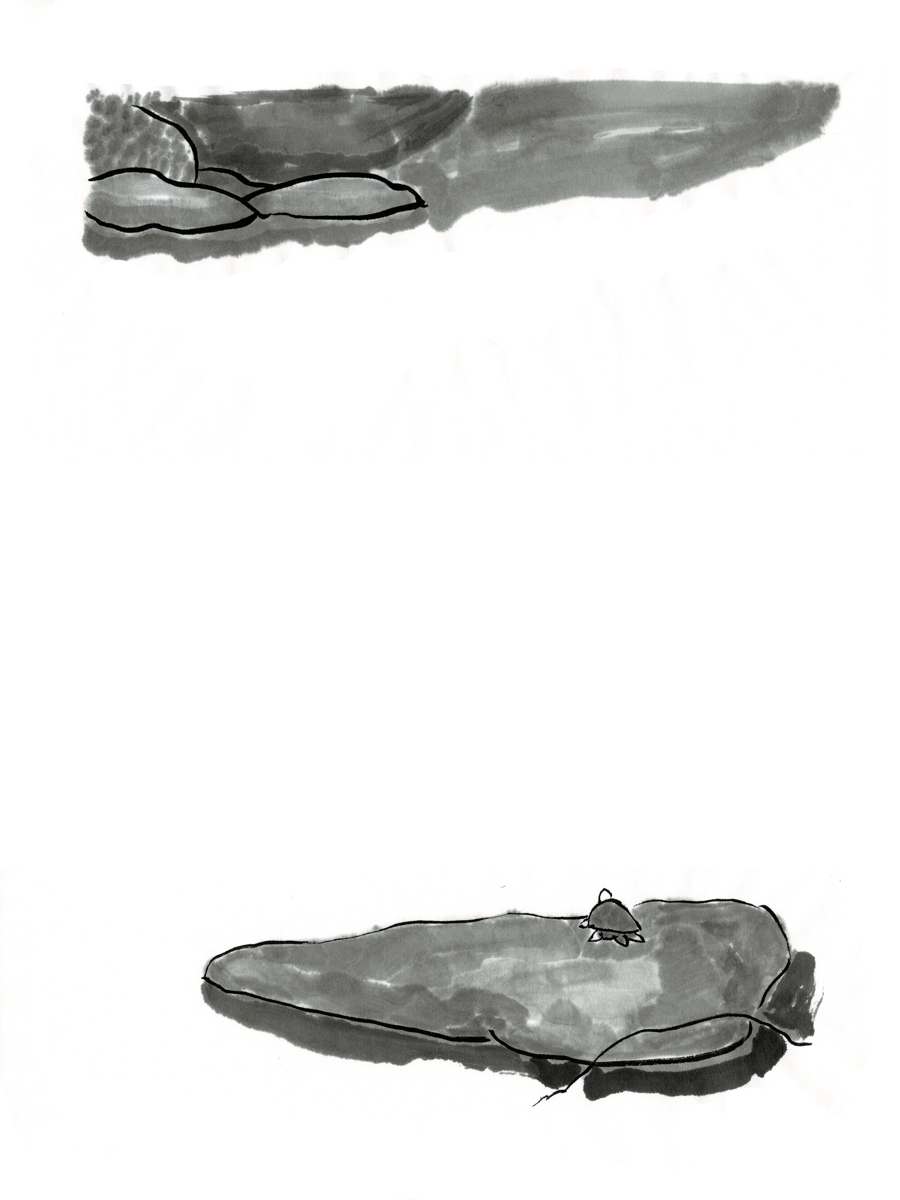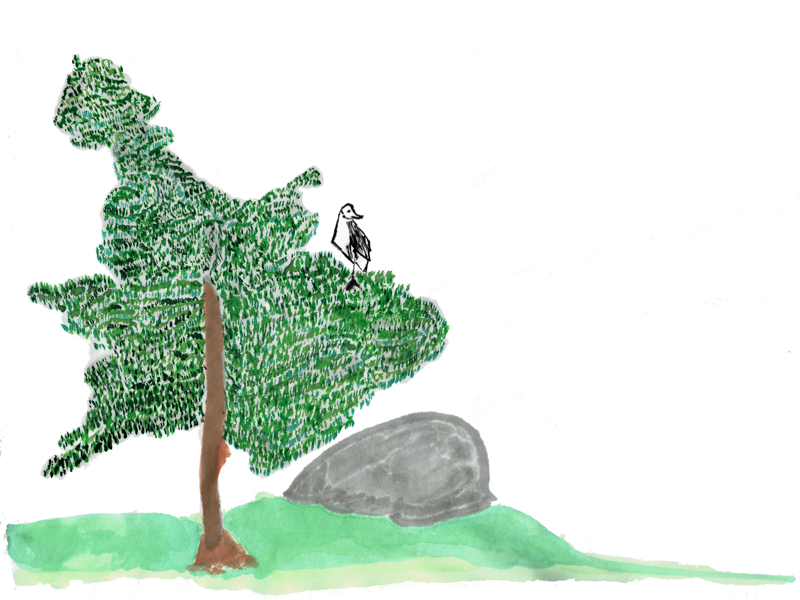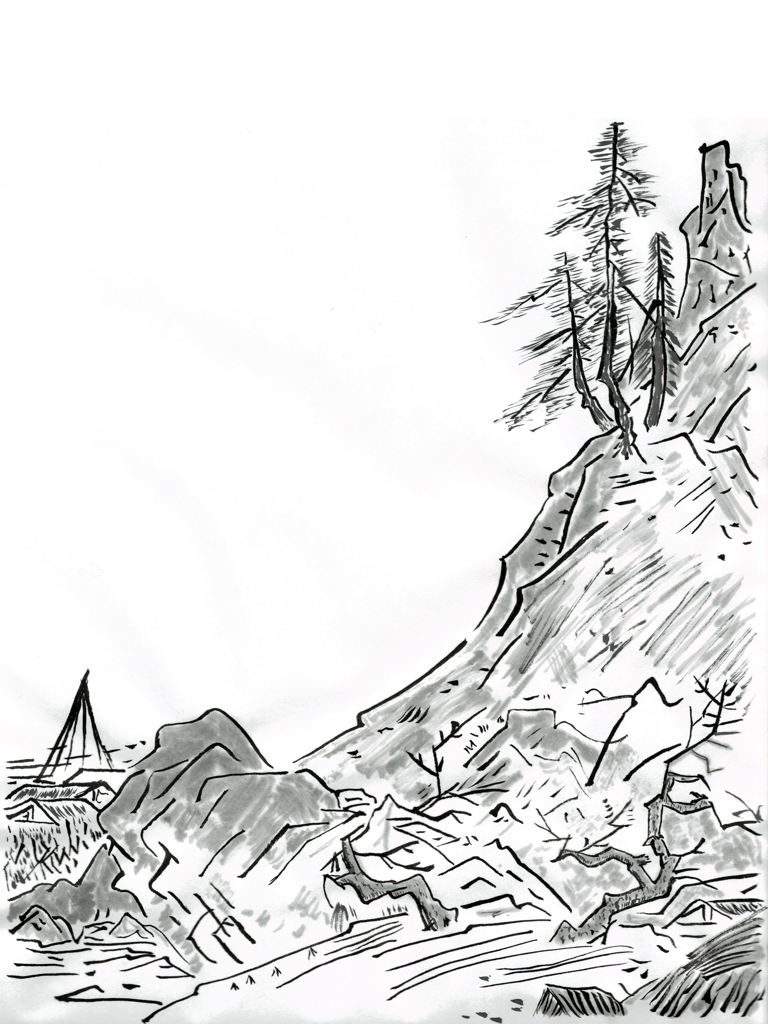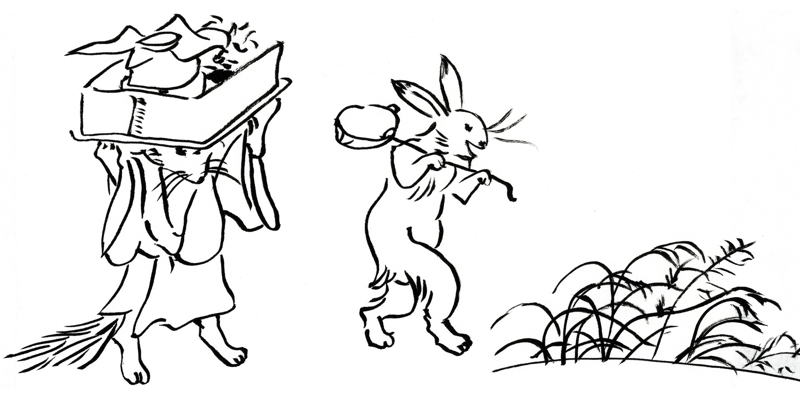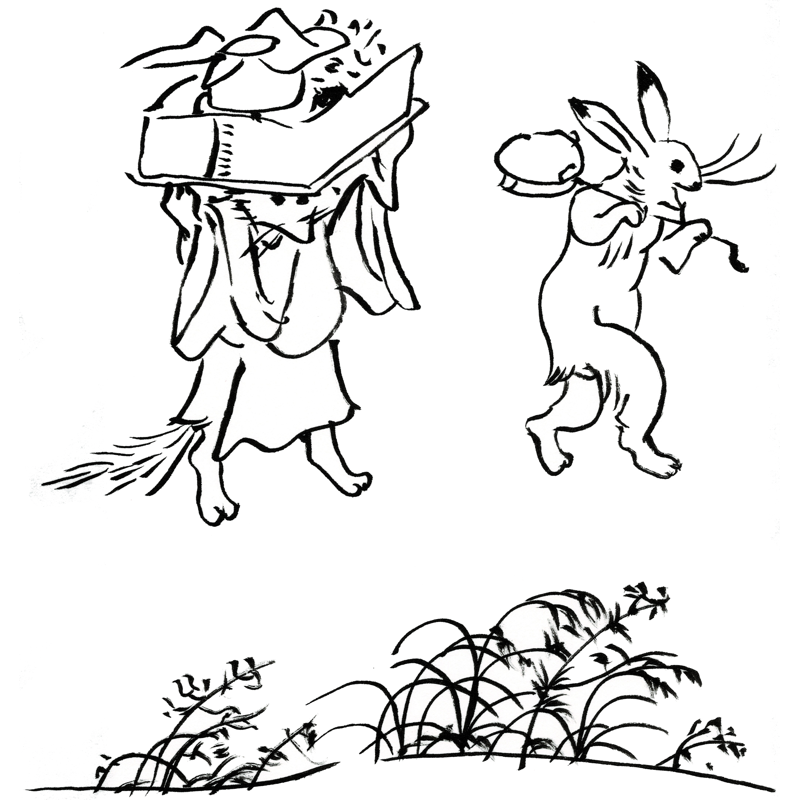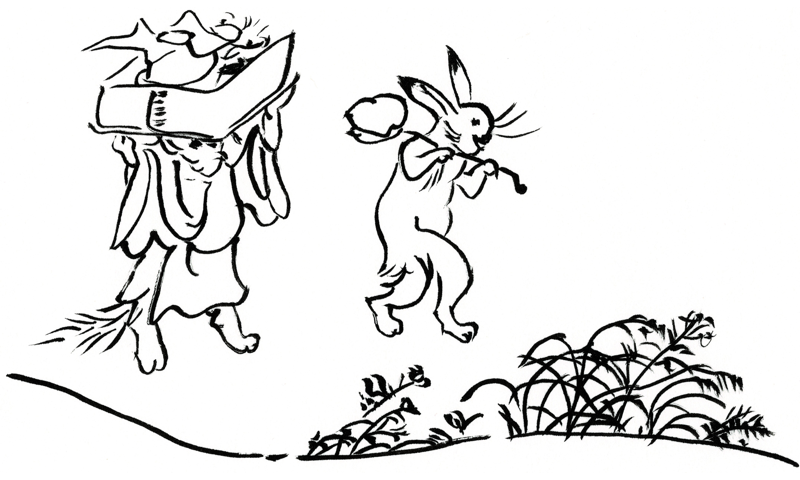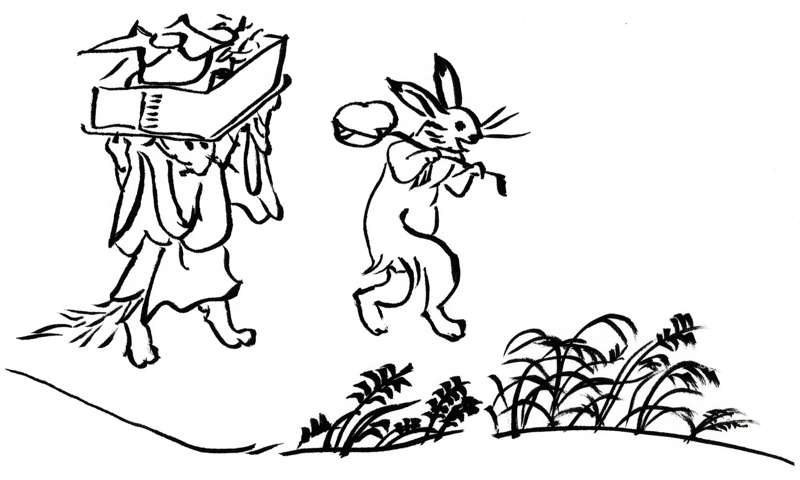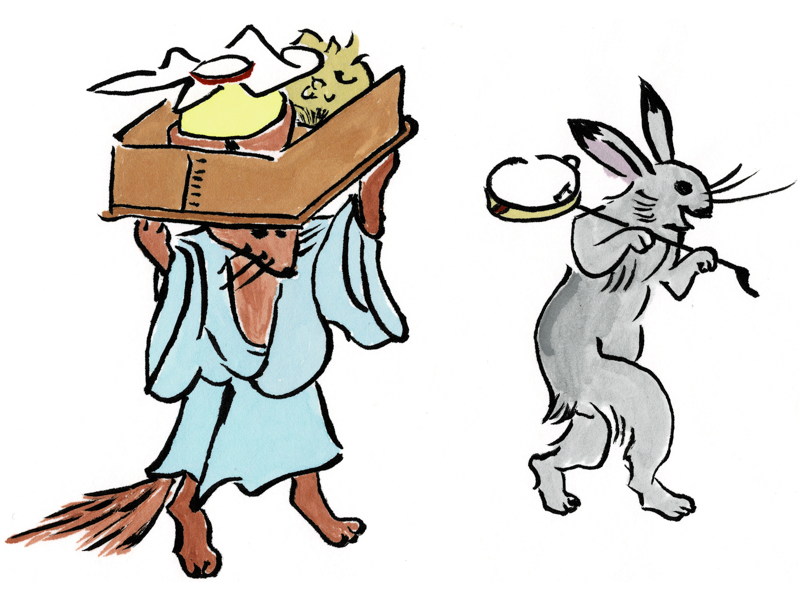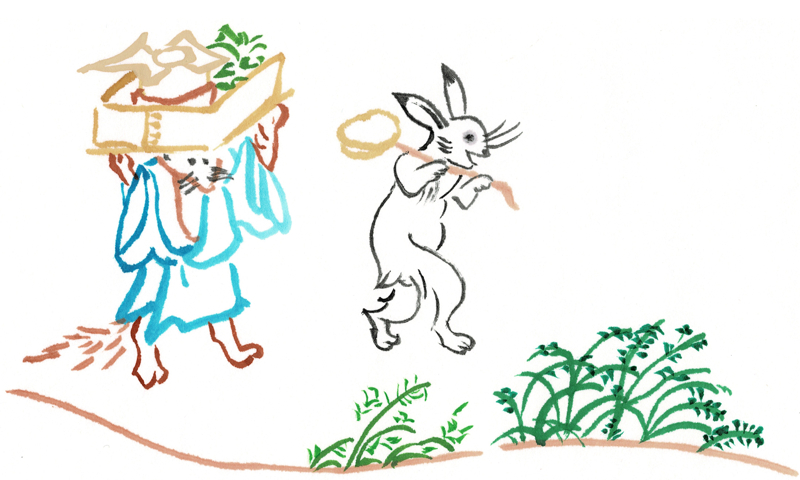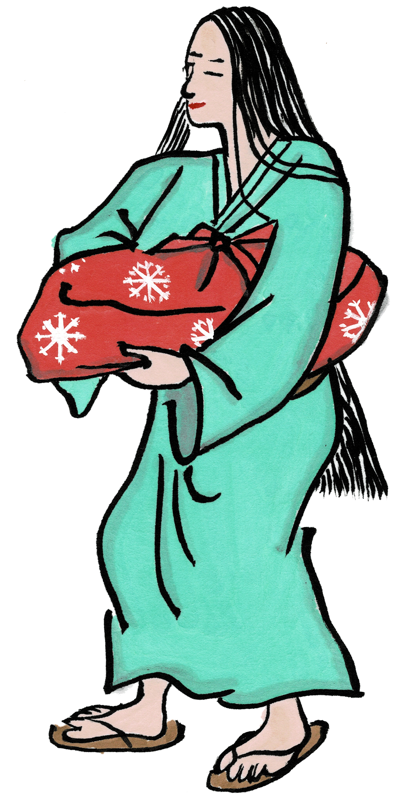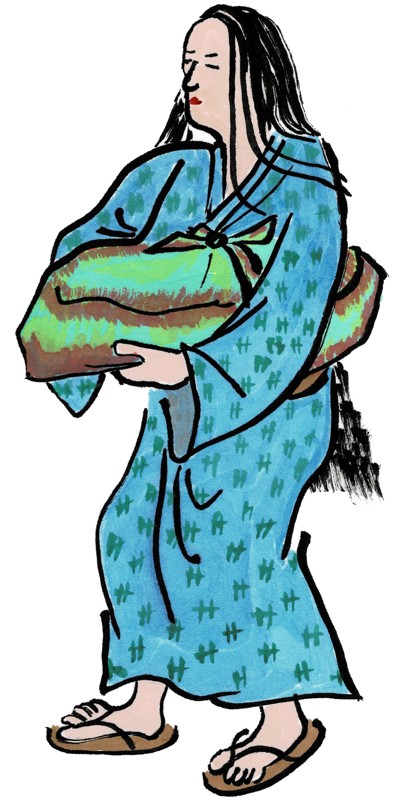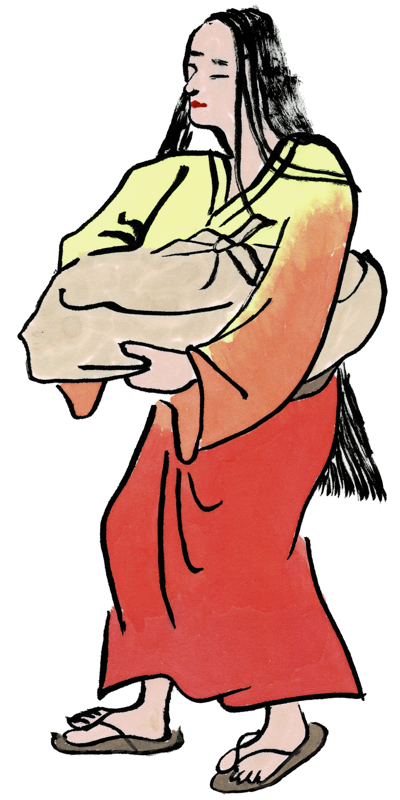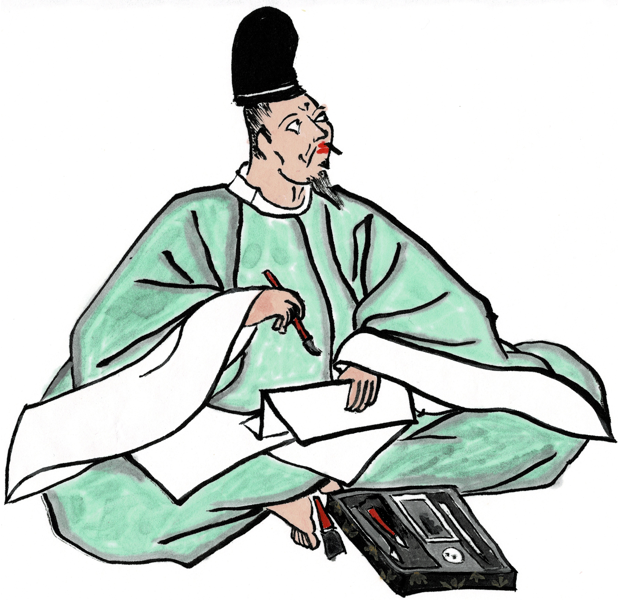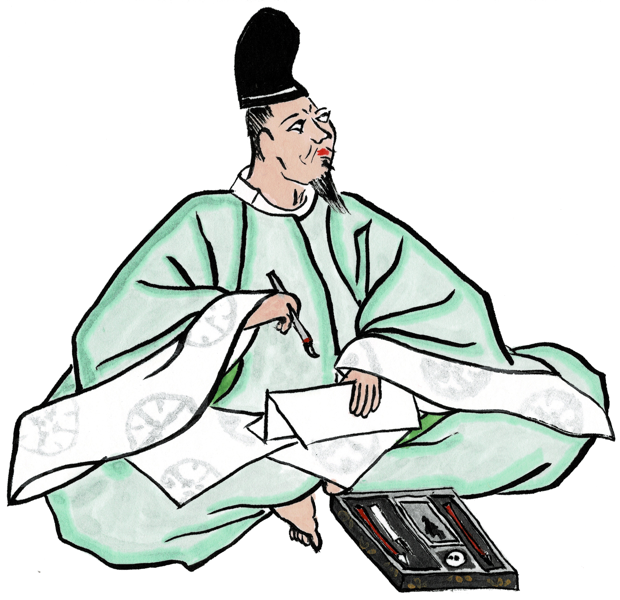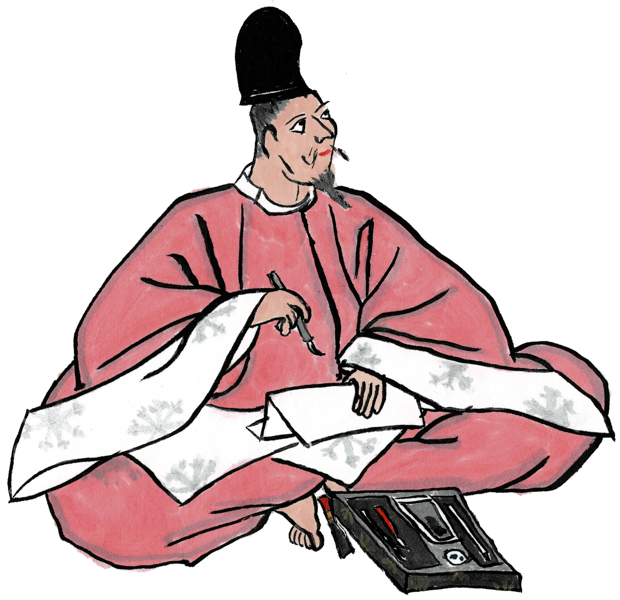This is the second of a pair of recent replications of images from the Nanajuichiban Shokunin Uta-awase emaki, a medieval Japanese scroll that depicts an imaginary poetry competition between artisans and artists of various types.
This emaki (illustrated scroll) depicts a poetry competition (uta-awase) among people of various occupations. The competition has 71 rounds, and 142 different kinds of craftspeople (shokunin) are depicted, each with their own poem. This image depicts a musician playing a small drum called a “ko-tzuzumi”, The heads of the drum are tensioned with rope. As she is depicted with a walking stick and zori sandals, she is most likely an itinerant musician.
I’m happier with the second copy, though realistic depictis of the drum appear to be somewhat beyond me. I’m intrigued by the thing where both this lady and the biwa player thread the walking stick through the straps of their sandals.
[Ishiyama‘s Yamato-e page has been updated to include all the paintings to date.]

